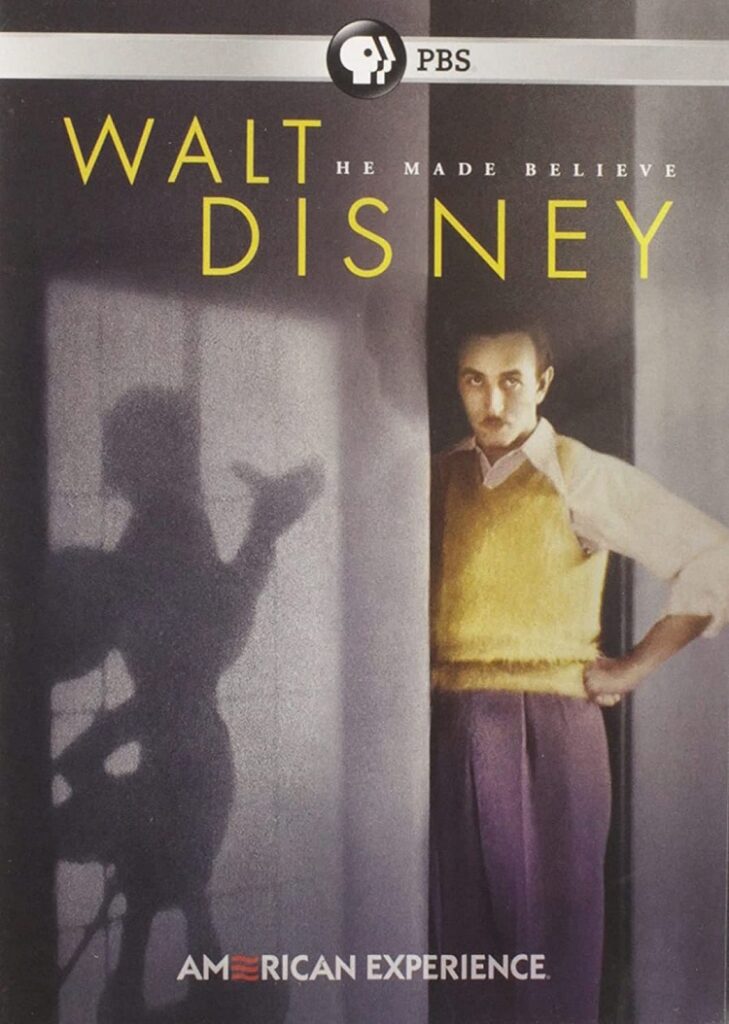
Written by Kristen Lopez
I’m a Disney nut. There, I said it. Too often I’m asked “Why do you love a company known for its phony aesthetic values?” or “You’re 27. How can you still love Disney?” I never come up with the proper answers to these questions outside of “Disney makes me happy.” PBS’ latest installment of their American Experience series lifts the veil off the man who extrapolated (and, in some cases, commidified) childhood happiness with their examination of Walt Disney. American Experience: Walt Disney humanizes a man often canonized as the patron saint of exuberance, portraying him as a devoted father and a man aghast at unionization, sympathetic witness for HUAC, and cinematic pioneer. Flush with archival footage and interviews from Walt’s closest confidantes, this is an experience you’ll certainly want to enjoy.
Walt Disney, beyond anything else he created, was bound by animation and a love for the simpler life. And while this has led to a “feel good rewrite of American history” in his Disney parks, the two ideas were what inspired Disney to take up the pen and create the movies most children grew up on. It’s astounding that, at just twenty, Disney had built his first company, drawing early animations, his Laugh-O-Grams.
Starting after Disney’s service in WWII, the documentary introduces Disney as a man of ambition; the Alexander the Great of the animation world. A child of the Depression, Disney’s early childhood is marked by struggle, all under the gaze of an imperious, “brutal” father. Disney utilized his hardscrabble upbringing to create cartoons, and even though he experienced setbacks, he was hellbent in the belief of his prowess at what he was creating. Watching clips of the early Oswald the Rabbit cartoons or Alice shorts looks beautiful, as each looks fully restored (or maybe that’s the work of a good HD television).
The early triumphs leading to the creation of the Walt Disney Animation studios are well-documented and known to the casual fan. Of course, it is here where the cracks start to show. The creation of the aforementioned animation studio is where Walt originally asserted himself as the face of the company, refusing to name the studio the Disney Brothers (after him and brother, Roy). The meat of the first night’s American Experience is found within this studio.
The once idyllic utopia for creativity and innovation is shown to be a glass front, with women strictly relegated to inking and painting for incredibly low wages; a hierarchy of top animators (able to afford food in the studio cafeteria) and perceived “lesser” animators forced to buy sandwiches or, as recounted by one animator, collapsing from malnutrition. These moments would easily have been excised from typical Disney material (and, if memory serves, there’s not too much elaboration about the events leading up to the animators strike at the Walt Disney Family Museum), but it sets the stage for the animators demands of unionization and strike.
Disney saw this as proof of Communist infiltration and subversion. The documentary never demonizes Disney, that’s left up to the audience. The facts are always presented in a straightforward manner. Although, considering the discrepancy regarding wages and gender, it’s fascinating the documentary never discusses Disney’s hiring practices regarding race. Race is a topic discussed, particularly during the making of Song of the South (its failure Disney also blamed on Communism), yet nothing is said about the lack of African-Americans actually working at the studio. Animator Floyd Norman, the only African-American animator during Walt’s tenure is interviewed, as is art professor Carmenita Higginbotham, but that extinguishes it for racial diversity. At almost four hours, the various roads that could have been taken are many, but it’s strange that taking into account critics continuous critiques of Disney and race – with Song of the South most closely associated – this is a topic that apparently didn’t exist by its omission here.
The race component is probably the biggest element missing but it’s unnecessary in a canvas this vast. The documentary’s first half ends with the strike, while the second half sees the formulation and execution of Disneyland and Mary Poppins. There’s no grand shift in Walt’s personality that comes with getting older. He’s still perceived as somewhat cold – he doesn’t cut his South American trip short despite hearing of his father’s passing – but is utterly devoted to his two daughters, Diane and Sharon. The home-movie footage of him with his daughters depicts a tender-hearted man who loved spoiling them.
By the end, the question “Who was Walt Disney?” is never definitively stated. Business-wise, he personifies all the things we love about animation, and without him we might not have feature-length animated films. His personality is a murkier mystery with both halves presented, but never one declartively stamped “This is who Walt was,” and that’s to the documentary’s benefit. American Experience: Walt Disney allows you to experience who the man was and you decide how you feel about him. After watching this, I see Walt as a man less identified with the godfather of animation, and more a man fraught with the fear of never living up to “Walt Disney.” Disney himself said he was never the Walt people saw on television, and that was hard to grasp. PBS gives you a glimpse at what he had to live up to.